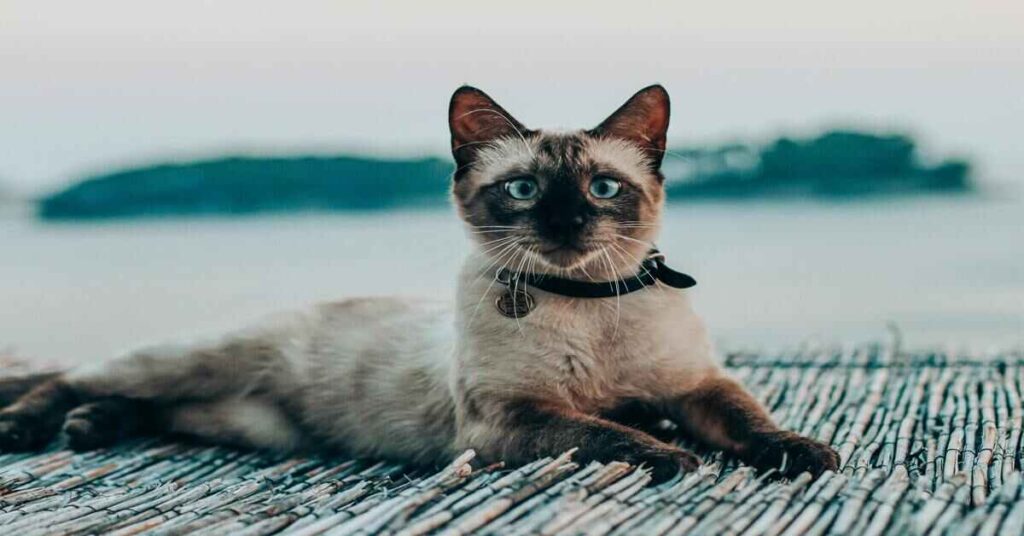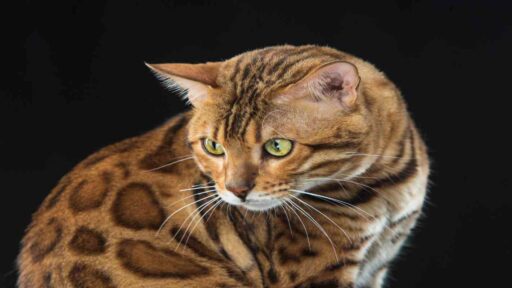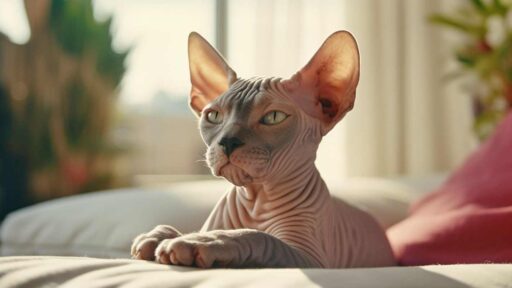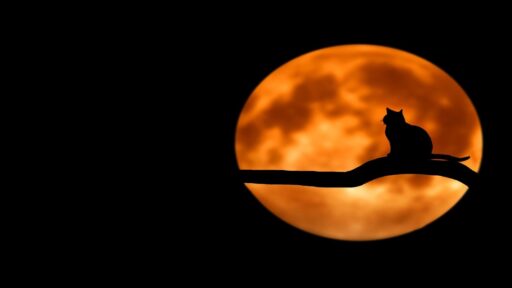Cat breeds encompass a diverse array of feline varieties; each with unique characteristics in terms of appearance, behavior, and temperament.
These cat breeds are a result of selective breeding. That highlights specific traits or features, From long-haired Persians to sleek Siamese. And from playful Abyssinians to gentle Ragdolls. The world of cat breeds offers a lot of choices for feline enthusiasts.
These cat breeds vary in size, coat length, colors, patterns, and personalities.
Each breed has its unique set of care requirements, grooming needs, and health considerations. Understanding the characteristics and needs of various breeds can assist in selecting a cat that aligns with your lifestyle.
The diversity within cat breeds offers a multitude of choices for prospective cat owners,

Incredible various cat breeds!
- Persian: Known for their long, luxurious fur and sweet, gentle temperament. They often have a flat face and require regular grooming due to their thick coat.
- Siamese: Recognized by their sleek bodies, striking blue almond-shaped eyes, and distinctive color points on their ears, face, paws, and tail. Siamese cats are highly vocal and sociable.
- Maine Coon: Among the largest domestic cat breeds, they have tufted ears, bushy tails, and a friendly, sociable nature. Their size and hearty constitution make them excellent companions.
- Bengal: Distinctive for their wild appearance due to their leopard-like spots or marbling. They’re energetic, and playful, and enjoy interactive play.
- Scottish Fold: Known for their unique folded ears, they often have a sweet and calm disposition. However, ethical concerns have arisen regarding the genetic trait responsible for the folded ears.
- Sphynx: Hairless cats with wrinkled skin, known for their affectionate, social nature. Despite being hairless, they do require regular bathing to remove excess oils from their skin.
- Ragdoll: Large and affectionate cats known for their striking blue eyes and semi-long fur that doesn’t mat easily. They’re gentle and often relaxed, hence the name “Ragdoll.”
- British Shorthair: Known for their round faces, stocky build, and dense coat. They have a calm and easy-going temperament, making them great companions.
- Abyssinian: Characterized by their ticked coat pattern, they’re active, playful, and enjoy interactive activities. Abyssinians are curious and love being involved in their human activities.
- Norwegian Forest Cat: They have a thick, water-repellent double coat suited for colder climates. Known for their intelligence and playful nature.
IN BRIEF
These cat breeds showcase a variety of appearances, temperaments, and characteristics.
It’s important to research each breed’s specific needs; and traits to find the best match for your lifestyle and preferences.
Here’s some more detailed information about additional cat breeds:
- Siberian: Known for their thick, triple-layered fur that helps them withstand cold climates. They’re friendly, and intelligent, and often enjoy water.
- Burmese: They have a sleek, muscular body, expressive eyes, and a silky coat. Burmese cats are affectionate, and playful, and enjoy interactive activities.
- Oriental: Similar to Siamese in body shape and personality but available in a wide range of coat colors and patterns. They’re vocal, affectionate, and curious.
- Exotic Shorthair: A short-haired version of the Persian breed, known for their sweet, gentle nature and plush coat.
- Tonkinese: A cross between Burmese and Siamese breeds, known for their playful, social, and affectionate nature.
- Devon Rex: They have a distinctive elf-like appearance with large ears, short curly fur, and an active, playful personality.
- Cornish Rex: Known for their soft, curly coat, they’re active, agile, and enjoy interacting with their owners.
- American Shorthair: They have a sturdy build, a wide variety of coat patterns and colors, and are known for their adaptability and good health.
- Himalayan: A cross between Siamese and Persian breeds, they have a Persian-like body with color points similar to the Siamese. They are affectionate and calm.
- Manx: Known for their lack of a tail or a very short tail, they’re playful, social, and can form strong bonds with their owners.
Each cat’s breed comes with its unique characteristics. Grooming needs, energy levels, and temperament. Understanding these traits helps in choosing a cat breed that aligns well with your lifestyle and preferences.
What is the Country Origin of Each Cat Breeds?
Here are the country origins of some cat breeds:
- Persian: Iran (formerly Persia)
- Siamese: Thailand (formerly Siam)
- Maine Coon: United States (Maine)
- Bengal: United States (developed from Asian Leopard Cats)
- Scottish Fold: Scotland
- Sphynx: Canada (originated from the United States)
- Ragdoll: United States
- British Shorthair: United Kingdom (England)
- Abyssinian: Uncertain, but believed to have origins in Ethiopia (formerly Abyssinia)
- Norwegian Forest Cat: Norway
- Siberian: Russia (Siberia region)
- Burmese: Myanmar (formerly Burma)
- Oriental: United Kingdom (developed from Siamese cats)
- Exotic Shorthair: United States (developed from Persians)
- Tonkinese: United States (developed from Burmese and Siamese breeds)
- Devon Rex: United Kingdom (England)
- Cornish Rex: United Kingdom (England)
- American Shorthair: United States
- Himalayan: United States (developed from crossing Persians and Siamese)
- Manx: Isle of Man
Is There Any Difference Between Cats Breeds Treatments?

There can be differences in the way different cat breeds might require treatments or care. These differences might include:
- Grooming: Persians or Maine Coons with long fur, need more frequent grooming to prevent mats and tangles.
The Sphynx, need regular skin care due to their lack of fur. - Health Considerations: Certain breeds might be predisposed to specific health issues. For instance, breeds like the Siamese or Abyssinian may be more prone to dental problems, while breeds like the Maine Coon might have a higher risk of heart issues.
- Activity Levels: Different breeds have varying energy levels and exercise needs. Some, like Bengals or Abyssinians, are highly active and require more playtime.
while others, like the British Shorthair, might be more laid-back and require less activity. - Feeding Requirements: Breed-specific diets might be recommended based on a cat’s breed, especially if they have specific health concerns or dietary needs.
- Behavioral Traits: Siamese cats are known for their vocal nature, while Ragdolls are often described as relaxed and docile.
Understanding the unique traits and tendencies of a cat’s breed helps in providing appropriate care.
Addressing any cat’s breed-specific health concerns, and meeting their individual needs effectively.
Here are further differences in the care and treatments specific to certain cat breeds:
- Allergies and Sensitivities: Some breeds might be more prone to allergies or sensitivities.
such as skin issues or food intolerances. For instance, breeds like the Devon Rex might be sensitive to certain foods or environmental factors. - Dental Care: Certain breeds, like the Siamese or Abyssinian, might require more dental care due to their susceptibility to dental problems.
like gingivitis or periodontal disease. - Temperature Sensitivity: Breeds like the Sphynx or the Devon Rex, being hairless or having minimal fur; require extra attention in colder climates to ensure they stay warm.
- Potential Genetic Conditions: Different breeds can have genetic predispositions to particular conditions. For example; Maine Coons might be prone to heart conditions.
- Exercise and Mental Stimulation: Some breeds, like Bengals or Abyssinians, are highly active and intelligent; requiring more interactive toys or activities to keep them mentally stimulated.
- Lifespan: While not a treatment, different breeds might have varying lifespans. Generally; some larger breeds tend to have shorter lifespans compared to smaller or medium-sized breeds.
Understanding these cats’ breed-specific differences helps in tailoring their care; identifying potential health issues early, and ensuring they lead healthy, happy lives.
Regular veterinary check-ups and a good understanding of your cat’s breed-specific needs are crucial for their well-being.
HERE IS SOME INFORMATION ABOUT CATS COLORS
Can We Mixe Too Different Cats Breeds?
It’s possible to mix two different cat breeds; which results in what’s commonly referred to as a “mixed-cats breed” or “crossbreed” cat.
These cats inherit traits from both parent breeds moreover their appearance, temperament, and characteristics can vary widely.
Sometimes intentional breeding occurs to create specific mixed breeds; such as the Tonkinese (Burmese and Siamese mix); or the Himalayan (Persian and Siamese mix). However, in many cases, mixed-breed cats are a result of natural mating between different breeds or unknown lineage.
Mixed-breed cats can exhibit an array of traits from both parent breeds; making them unique and diverse. They may inherit certain health or behavioral traits; from each parent breed, and their appearance can be a blend of characteristics from both breeds; or sometimes resemble one breed more than the other.
These cats make wonderful pets; often possessing a mix of traits that can be highly endearing.
However, it’s important to note that while mixed-breed cats can be unique and lovable; they may not be eligible for specific breed registries or exhibitions due to their mixed ancestry.
Here are some additional points about mixed- cats breeds:
- Health and Genetic Diversity: Mixed-breed cats often benefit from what’s known as hybrid vigor; or genetic diversity.
This diversity can sometimes result in fewer inherited health issues; compared to purebred cats, as they have a broader genetic pool. - Unique Appearance and Personality: Mixed-breed cats can have a wide range of physical appearances and temperaments. Their looks and behavior can vary greatly, making each mixed-breed cat unique and distinctive.
- Adopting Mixed-Breed Cats: Many mixed-breed cats are found in shelters or are adopted from rescue organizations.
Adopting a mixed-breed cat not only provides a loving home to a cat in need but also introduces you to the charming unpredictability and individuality of mixed breeds. - Size and Characteristics: Depending on the breeds involved, mixed-breed cats can vary in size, coat length, color, and personality traits.
For example, a mix between a large breed like a Maine Coon and a smaller breed may result in a cat that falls in between in terms of size. - Behavior and Trainability: Mixed-breed cats can have diverse personalities.
Some might inherit specific behaviors from their parent breeds, while others might exhibit unique traits. Training and socialization can help shape their behavior positively, regardless of their lineage.
Mixed-breed cats offer a blend of traits from different breeds, making them delightful and fascinating companions. Their unique mix of characteristics can make them an excellent addition to any home looking for a special feline friend.
Wild Cats Breeds
“Wild breeds” in cats, might refer to domestic breeds that resemble or have ancestral connections to wild feline species.
Those breeds could refer to hybrid cats, which are a cross between domestic cats and wild cats.
- Bengal: Known for its leopard-like spots and descended from Asian Leopard Cats.
- Savannah: Resulting from crossing domestic cats with servals, creating a larger, more exotic-looking cat.
- Chausie: Developed from crossing domestic cats with jungle cats, having a wild appearance.
- Pixie-Bob: Often resembling a wild bobcat due to its bobbed tail and rugged appearance.
These breeds are domesticated and have been selectively bred to maintain wild-like appearances; while having domestic cat temperaments suitable for home life.
Hybrid cats, on the other hand, are crosses between domestic and wild cats, resulting in breeds like the Bengal, Savannah, or Chausie. These hybrids often have distinctive appearances, resembling their wild ancestors, and might possess some behavioral traits reminiscent of their wild counterparts.
It’s essential to research and understand the needs and behaviors of these breeds.
Cats breeds might have specific care requirements due to their wild ancestry or hybrid nature.
Cats Breeds Which One is Better?

Determining the “better” breed of cat; depends on various factors and individual preferences; Each breed has its unique traits and what might be the best breed for one person might not be the same for another.
Here are some considerations:
- Personality: breeds like the Ragdoll or Maine Coon might be suitable. If you prefer an active and playful cat, breeds like the Bengal or Abyssinian might be more appealing.
- Grooming Needs: Long-haired breeds like Persians might need more grooming to prevent mats, while short-haired breeds like the American Shorthair might require less maintenance.
- Health Considerations: Some breeds are more prone to certain health issues than others. Understanding a breed’s potential health problems might influence your decision.
- Lifestyle: Consider your lifestyle and living situation. Some breeds require more attention, activity, or space than others.
- Adoption: Mixed-breed cats, often found in shelters, can make wonderful pets.
They can possess a blend of traits from various breeds and might be a great fit for your home.




